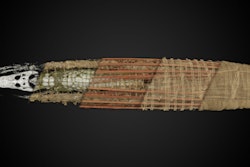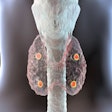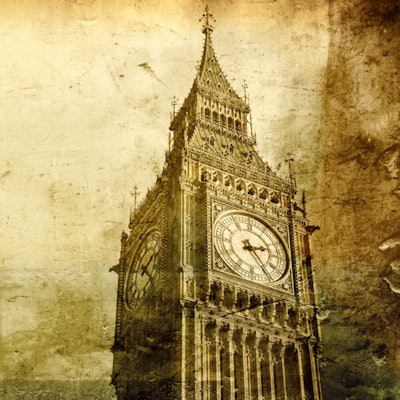
A global team of researchers has used imaging to help unlock the medical secrets of 18th and 19th century skeletons from a London crypt, shedding light on many conditions other than those detected by osteological analysis alone. X-rays are providing a clearer illustration as to the extent of infectious and neoplastic lesions.
Throughout history, different methods have been used for analyzing human remains in an attempt to understand changes in baseline health over time, and potentially, to predict the future wellbeing of populations. But what if one method yields a different set of results from another, leading to a divergent tableau of ancient or even modern health?
Efforts involving the use of such methods to understand past health and disease burden have led to new thinking about the physiology and epidemiology of contemporary disease, the authors noted. However, it is crucial to understand that conclusions will vary depending on the method used, particularly if the study results are disparate.
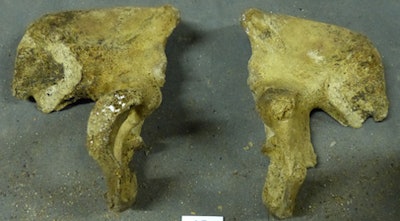 Photos show a 59-year-old male from St. Bride's, with osteoblastic lesions throughout the skeleton, suggestive of prostate cancer. All images and photos courtesy of Katherine van Schaik et al.
Photos show a 59-year-old male from St. Bride's, with osteoblastic lesions throughout the skeleton, suggestive of prostate cancer. All images and photos courtesy of Katherine van Schaik et al.An interdisciplinary research group from Harvard, London, and Zurich sought to assess differences between osteological and radiological analysis techniques used on bioarcheological samples, and also to understand the effect that radiological analysis might have on establishing levels of ill health in both past and present populations.
The analysis has been published in Radiologist in the Crypt, a special report in the October issue of Academic Radiology (Vol. 24:10, pp. 1305-1311).
"Anthropologists have tended to underestimate age-at-death for previous eras. They think people in the past did not live as long as they actually did," lead author Katherine van Schaik told AuntMinnieEurope.com. "Because the biology of aging and the prospect of chronic disease is increasingly relevant in modern medical contexts, we therefore sought to further probe the relationship between past burden of disease with age-at-death using multiple analytical modalities."
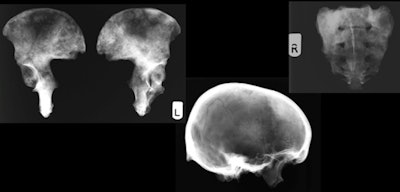 X-ray images of the 59-year-old male in the photos above.
X-ray images of the 59-year-old male in the photos above.The study revealed significant differences in the types of lesions that the two analytical methods identified, in the number of lesions found, and in lesion numbers between the sexes.
Van Schaik, a trainee radiologist at Harvard Medical School who also will be awarded her PhD in ancient history from Harvard Classics Department next year, opted to study a collection of individuals from the 19th century crypt of St. Bride's in London, now under the care of the Museum of London. The collection consisted of 213 individuals for whom age-at-death data were available from lead coffin plates.
Osteological analysis was carried out on the 213 adult skeletons a few years before radiological analysis took place. For 189 individuals, x-rays of the crania, humeri, pelvises, femora, and tibiae were taken in situ with a portable x-ray machine, and examined. These bones were selected because they were most likely to show evidence of a wide range of pathologies and were present for all skeletons, according to the authors. It was not possible to x-ray 24 skeletons due to postmortem decay.
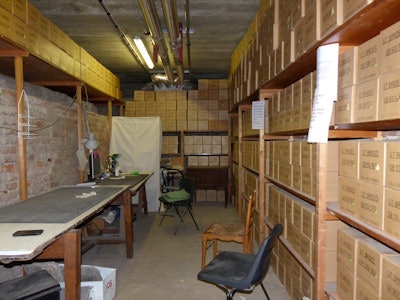 The crypt in St Bride's, London, where radiological examination took place. The stacked and labeled cardboard boxes contain the bones of an individual recovered from each lead coffin. The table on the left of the image was used for taking x-rays with a portable unit.
The crypt in St Bride's, London, where radiological examination took place. The stacked and labeled cardboard boxes contain the bones of an individual recovered from each lead coffin. The table on the left of the image was used for taking x-rays with a portable unit.Identified lesions were grouped into nine standard categories established by anthropologists, and statistical analysis was carried out on three groups: a complete osteological dataset (COD = 213), an adjusted osteological dataset (AOD =189) of only those bones examined by x-ray, and a radiological dataset (RD = 189).
In general, the radiological analysis identified fewer lesions per skeleton than did the osteological analysis. However, the radiological analysis of a selected group of bones tended to identify more metabolic lesions -- often rickets -- as a percentage of the total lesions for a given individual than did the osteological analysis. In other cases such as circulatory and neoplastic lesions, a similar number were identified regardless of method. The key findings are shown in the table below.
| Average number of lesions identified per skeleton, with percentages given as percentage of the total average number of lesions | |||
| Lesion category | Avg. number of lesions (COD) (%) | Avg. number of lesions (AOD) (%) | Avg. number of lesions (RD) (%) |
| Circulatory | 0.08 (2.6) | 0.03 (1.4) | 0.02 (1.5) |
| Congenital | 0.60 (19.0) | 0.22 (10.0) | 0.06 (4.5) |
| Infectious | 0.52 (16.5) | 0.49 (22.1) | 0.13 (9.7) |
| Joints | 0.75 (23.7) | 0.21 (9.5) | 0.43 (32.1) |
| Metabolic | 0.12 (3.9) | 0.11 (5.0) | 0.27 (20.1) |
| Miscellaneous | 0.61 (19.3) | 0.88 (40.0) | 0.29 (21.6) |
| Neoplastic | 0.10 (3.3) | 0.11 (5.0) | 0.06 (4.5) |
| Trauma | 0.37 (11.7) | 0.17 (7.7) | 0.08 (6.0) |
| Total average number of lesions per skeleton | 3.15 | 2.22 | 1.34 |
Significant differences
Although correlations between age-at-death and total number of lesions identified were nearly identical, regardless of the analysis method, for all three data groups (0.35 (RD), 0.31 (AOD), and 0.32 (COD)), the different datasets showed sex-related differences with regard to the number of lesions and age-at-death: Unlike osteological assessment, radiological analysis of bones suggested that, as they age, men accumulate skeletal lesions more rapidly than women.
For the RD, regression analysis indicated that for men, an additional lesion is associated with a 3.05-year increase in age-at-death, whereas for women, the increase is 7.85 years. However, in the AOD and COD, there was no significant difference between the sexes when comparing the total number of lesions with age-at-death.
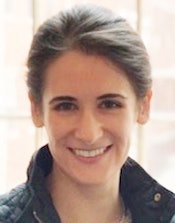 Katherine van Schaik.
Katherine van Schaik.For questions about whether extensive changes in bone texture were indicative of postmortem decay or of a pathologic process, radiological analysis enabled clearer identification of a case of probable Paget disease and a case of osteoporosis than osteological analysis did. Conversely, when osteological analysis identified more localized changes in bone texture as seen in focal osteomyelitis in a limited region of a single bone, radiological analysis tended not to register evidence of a lesion.
The researchers believe the study emphasizes the method for visualizing lesions affects whether or not they are seen, and, if visualized, how severe they appear to be. While most osteologists and anthropologists are aware of these methodological challenges, this latest research provides greater understanding of the problem, noted van Schaik, speaking on behalf of the study's co-authors: radiologists, Dr. Frank Rühli, PhD, and Dr. Ronald Eisenberg, as well as osteologist Jelena Bekvalac.
"Osteological analysis appears to be more sensitive than radiological analysis in identifying fine changes on the surface of bone that could be suggestive of an infectious or inflammatory process, though there is a possibility this greater sensitivity means that false positives are identified. We are exploring this question further in additional manuscripts that are under review," van Schaik noted.
A privileged sample
So how did the individuals found in the crypt live and die? In general, the population of 19th century London was more malnourished than Western European populations today -- many of the St. Bride's skeletons showed evidence of rickets and there were also a few cases of tertiary syphilis. Notably, a subset of the individuals lived into their 70s, and did so seemingly in relatively good health. In at least two cases, evidence of metastatic cancer was noted on the skeletons. X-rays helped to characterize the extent of these lesions.
However, van Schaik pointed out some of the study's limitations: Individuals buried in crypts were part of a social elite and not representative of the masses. However, it is probable the lower echelons of society would have suffered from at least as many, and most likely more health problems than those found at St Bride's. Another limitation is that only a small fraction of infectious disease marks the bones, and death through infection was more widespread than osteological or radiological analysis suggests.
Multidisciplinary approach
Van Schaik said it is important to involve pertinent disciplines in bioarcheological research.
"Historical context is sometimes left out of the analysis and discussion when radiologists carry out their work on human remains from bioarchaeological contexts. This can prompt the historical community to question the applicability and interpretation of the findings. Similarly, historians might not be familiar with aspects of medical and scientific methods of analysis. The interdisciplinary approach is vital," she said.
She further said osteological and radiological analysis combined provide a picture of health that, while not perfect, is more complete than would be the case with a single method of study. Skeletons therefore can offer the same rich research range as mummies, though they provide answers to different kinds of questions.
"Destructive study of human remains in museum collections is a serious problem. While information can be gleaned from molecular-level research like ancient DNA analysis, the samples under study are irrevocably destroyed in the analysis process," van Schaik noted. "Radiological analysis is an excellent tool precisely because it does not require destructive sampling to yield new information about health and disease."






